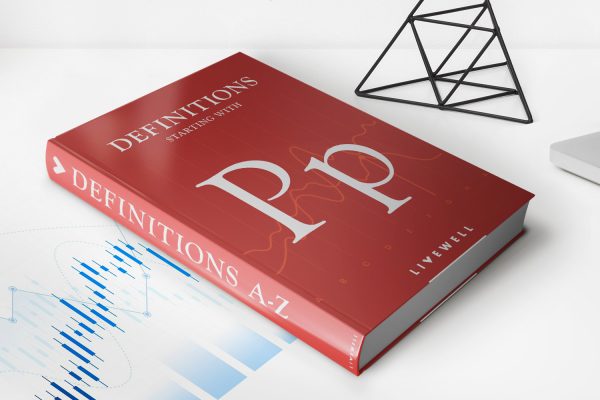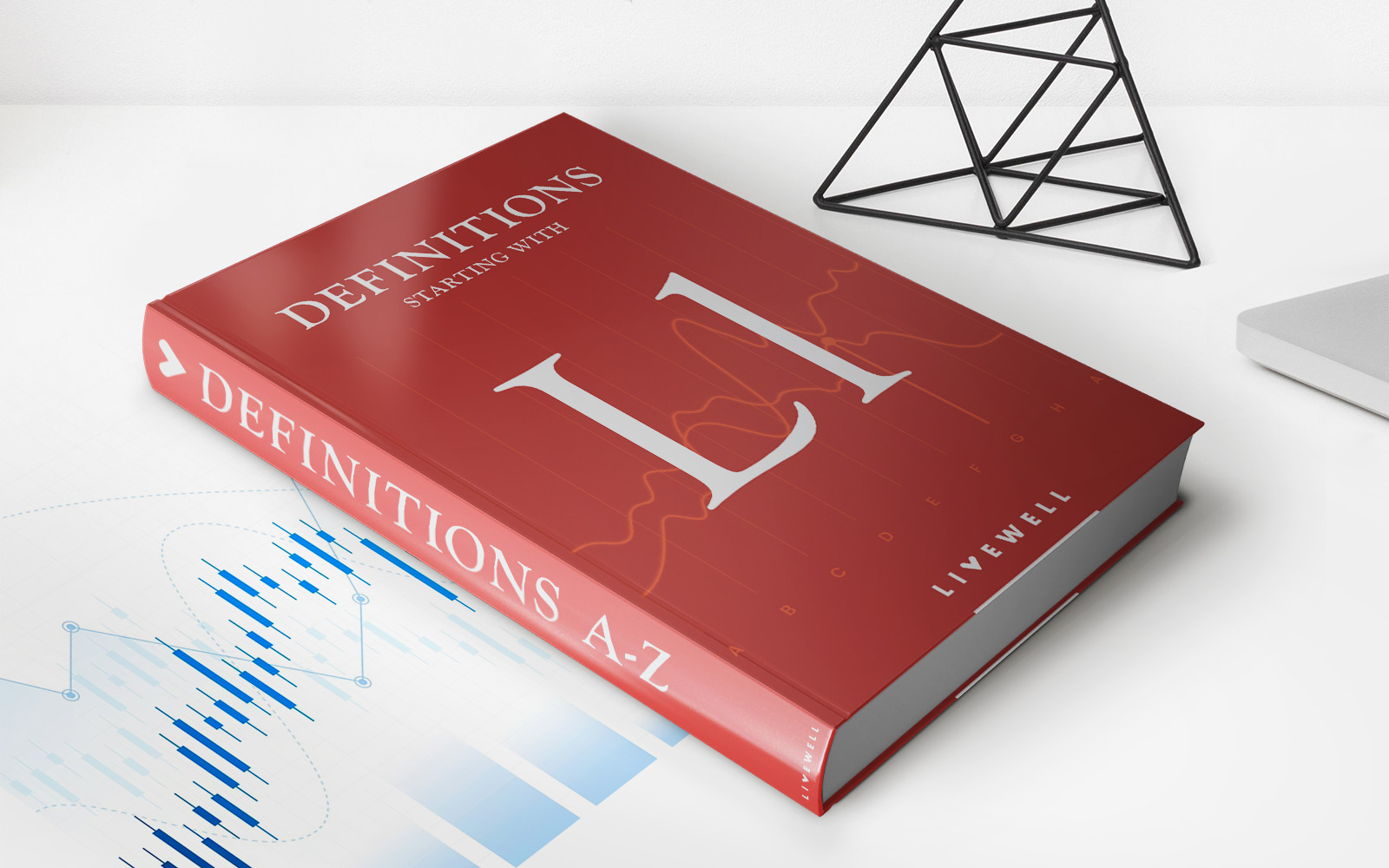

Finance
How To Apply For Pension Benefits
Published: November 27, 2023
Learn how to apply for pension benefits and secure your financial future. Get expert advice on navigating the pension application process.
(Many of the links in this article redirect to a specific reviewed product. Your purchase of these products through affiliate links helps to generate commission for LiveWell, at no extra cost. Learn more)
Table of Contents
Introduction
Welcome to our comprehensive guide on how to apply for pension benefits. Planning for retirement is a crucial aspect of financial stability, and pensions play a significant role in providing a steady income during your golden years. Whether you’re approaching retirement age or planning ahead, understanding the process of applying for pension benefits is essential.
Pension benefits are a form of retirement income that you receive from your employer or a pension fund. Each pension plan has its unique eligibility requirements and application process, which can seem overwhelming at first. However, with the right information and guidance, applying for pension benefits can be a straightforward and rewarding experience.
In this guide, we will outline the eligibility requirements, explain the types of pension benefits available, and provide step-by-step instructions on how to gather the required documents and complete the application process. We will also cover how to submit your application, check the status, and navigate the appeals process if necessary.
It’s important to note that the process of applying for pension benefits differs depending on the type of pension plan you are enrolled in, such as a defined benefit plan or a defined contribution plan. Additionally, the specific rules and regulations may vary between countries or regions, so it’s vital to consult with your pension plan administrator or financial advisor for personalized guidance.
Now, let’s dive into the details of applying for pension benefits and empower you to make informed decisions about your retirement income!
Eligibility Requirements
Before you can apply for pension benefits, it’s essential to determine if you meet the eligibility requirements set forth by your pension plan. While the specific criteria may vary depending on the plan, there are some common factors to consider:
- Age: Most pension plans have a minimum age requirement for receiving benefits. This age is often referred to as the “normal retirement age.” Some plans may allow for early retirement with reduced benefits, while others may have provisions for delayed retirement with increased benefits.
- Years of Service: Pension plans often require a minimum number of years of service with the employer or in the plan to qualify for benefits. This can range from a few years to several decades, depending on the plan’s rules.
- Vesting Period: Vesting refers to the process of earning the right to your pension benefits. Some plans have a vesting period, which means you must work a certain number of years before you are considered vested and eligible to receive the benefits.
- Employment Status: You may need to be actively employed by the company at the time of retirement to qualify for the pension benefits. However, some plans also offer benefits to former employees or allow for benefits to be deferred until a later date.
- Disability or Special Circumstances: Certain circumstances, such as disability or early termination due to downsizing, may provide eligibility for pension benefits even if you haven’t met the usual age or years-of-service requirements. It’s important to check if your plan has provisions for these situations.
It’s worth mentioning that eligibility requirements can be complex, and understanding the specifics of your pension plan is crucial. To determine your eligibility, review the plan documents provided by your employer or pension administrator. If you have any questions or need clarification, don’t hesitate to reach out to your plan administrator or a financial advisor.
Keep in mind that different types of pension plans may have additional requirements or factors to consider. For example, if you have a defined contribution plan, your eligibility may depend on the contributions you have made and the performance of your investment portfolio.
Now that we’ve covered the eligibility requirements, let’s move on to the different types of pension benefits you may be eligible for.
Types of Pension Benefits
When it comes to pension benefits, there are various types of plans that you may be eligible for. Understanding the different types can help you determine the specific benefits you may receive. Let’s explore some common pension benefit options:
- Defined Benefit Plan: This type of pension plan guarantees a specific monthly benefit amount based on factors such as your years of service and average salary. The benefit is typically calculated using a formula outlined in the plan, and it provides a predictable income during retirement.
- Defined Contribution Plan: In contrast to a defined benefit plan, a defined contribution plan allows for individual contributions to be made to an investment account. These contributions come from both the employee and employer, and the eventual retirement benefit is based on the performance of the investments. Examples include a 401(k) or an individual retirement account (IRA).
- Government Pensions: Many countries have government-sponsored pension programs that provide income support for retired individuals. Examples include Social Security in the United States, the Canada Pension Plan in Canada, and the State Pension in the United Kingdom. The eligibility criteria and benefit amounts vary depending on the specific program and the individual’s contributions.
- Military Pensions: Military personnel may be eligible for pension benefits after completing a certain number of years of active duty service. These pensions provide a stable income for retired military members and their eligible dependents.
- Individual Retirement Accounts (IRAs): IRAs are personal investment accounts specifically designed for retirement savings. Contributions to IRAs can be made on a pre-tax or after-tax basis, and the funds grow tax-deferred until retirement. There are traditional IRAs and Roth IRAs, each with its own rules and tax advantages.
It’s essential to understand the specifics of your pension plan and the benefits it offers. Review the plan documents, consult with your employer or pension administrator, or seek guidance from a financial advisor to gain a clear understanding of the benefits you will receive upon retirement.
Once you have a good grasp of the different pension benefit options available, the next step is gathering the required documents for your application. We’ll explore this in the next section.
How to Gather Required Documents
Before you can apply for pension benefits, it’s crucial to gather the necessary documents to support your application. The specific documents required may vary depending on your pension plan and individual circumstances. Here are some common documents you may need to gather:
- Identification Documents: You will likely need to provide proof of your identity, such as a valid government-issued photo ID like a passport or driver’s license. Make sure to have a copy of these documents readily available.
- Social Security or National Insurance Number: Depending on your country’s requirements, you may need to provide your social security number or national insurance number as part of the application process. It’s important to have this information accessible when applying for pension benefits.
- Employment Records: Gather your employment records and any relevant employment-related documents. This can include records of your dates of employment, job titles, and salary history. In some cases, you may need to provide a letter from your employer verifying your employment and the details of your pension plan participation.
- Savings and Investment Statements: If you have any additional retirement savings or investment accounts, such as a 401(k) or an IRA, you may need to provide statements or account information. This is particularly important for defined contribution plans, as it may impact the calculation of your pension benefits.
- Marriage and Divorce Certificates: If you are married or divorced and you have a spouse or former spouse entitled to a portion of your pension benefits, you may need to provide marriage or divorce certificates as proof of your relationship status.
- Beneficiary Information: You may also need to provide information about your chosen beneficiaries, who would receive the pension benefits in the event of your passing. This can include their full names, dates of birth, and social security numbers or national insurance numbers.
- Disability Documentation: If you are applying for pension benefits based on a disability, you may need to provide medical records, doctor’s reports, or other documentation supporting your disability claim. Consult your plan administrator or a healthcare professional for guidance on the specific documents required.
It’s crucial to review the requirements of your pension plan and consult with your plan administrator or a financial advisor to ensure you have all the necessary documents in order. Missing or incomplete documentation can delay your application process, so be diligent in gathering the required paperwork.
Now that you have gathered the necessary documents, let’s move on to the application process itself.
Application Process
Once you have gathered all the necessary documents, it’s time to start the application process for your pension benefits. The specific steps may vary depending on your pension plan, but here is a general overview:
- Contact Your Plan Administrator: Begin by contacting your plan administrator to inquire about the application process. They will provide you with the necessary forms and instructions tailored to your specific pension plan.
- Review the Application Forms: Carefully review the application forms provided by your plan administrator. Take the time to understand the questions and requirements, ensuring all information is accurate and complete.
- Seek Professional Assistance (If Needed): If you find the application process complex or confusing, consider seeking assistance from a financial advisor or retirement specialist. They can help guide you through the process, answer any questions, and ensure you submit a thorough and accurate application.
- Fill Out the Application: Complete the application forms, providing the requested information and attaching the required documents. Take care to double-check all entries for accuracy and legibility.
- Keep Copies of Everything: Make copies of your completed application and all supporting documents for your records. This will help you in case any issues arise or if you need to refer back to the information later on.
- Submit the Application: Return the completed application and supporting documents to your plan administrator according to their instructions. This may involve mailing the documents, submitting them electronically, or hand-delivering them to a designated location.
It’s important to note that some pension plans may also allow for online applications through a secure portal. If this option is available, follow the online instructions provided by your plan administrator to submit your application digitally.
After you have submitted your application, it’s time to follow up and check the status of your application. We will explore this in the next section.
Filling out the Application Form
When it comes to filling out the application form for your pension benefits, it’s essential to provide accurate and complete information. This section will guide you through the process of filling out the form effectively:
- Read the Instructions: Begin by carefully reading the instructions provided with the application form. Understand the purpose of each section and any specific requirements or guidelines.
- Personal Information: Start by providing your personal information, such as your full name, date of birth, social security number or national insurance number, and contact details. Ensure that all details are accurate and up to date.
- Employment History: Next, provide details of your employment history, including the names of employers, job titles, dates of employment, and salary information. Be thorough and include all relevant employment periods, even if they were part-time or temporary.
- Beneficiary Designations: If your pension plan requires beneficiary designations, indicate the full names and contact information of your chosen beneficiaries. This ensures that your pension benefits will be distributed according to your wishes in case of your passing.
- Banking Information: Provide your banking information, including your bank account number and routing number. This is crucial for direct deposit of your pension benefits, ensuring a seamless and secure transfer of funds.
- Signature and Date: Review the completed application form for accuracy and completeness. Once you are satisfied, sign and date the form as instructed. Your signature signifies your agreement to the terms and conditions outlined in the application.
- Additional Documentation: Attach any required supporting documents as specified in the application instructions. This may include identification documents, employment records, marriage or divorce certificates, or disability documentation.
It’s important to fill out the application form accurately and provide all the necessary information. Incomplete or incorrect information may result in delays or issues with your application. If you are uncertain about any section or require assistance, consult with your plan administrator or a financial advisor for guidance.
Once you have completed the application form, it’s time to submit it for processing. We will discuss the submission process in the next section.
Submitting the Application
After you have filled out the application form for your pension benefits, it’s time to submit it to your plan administrator for processing. Following the correct submission process is crucial to ensure your application is received and evaluated in a timely manner. Here are the general steps to submit your application:
- Compile the Application Package: Gather all the required documents, including the completed application form and any supporting paperwork. Double-check that everything is accurate, complete, and organized.
- Make Copies: Before submitting the application, make copies of all the documents for your records. This will serve as a backup in case any issues arise or if you need to reference the information later on.
- Follow Submission Instructions: Review the instructions provided by your plan administrator for submitting the application. This may include mailing the application package, submitting it electronically through a secure portal, or hand-delivering it to a specific location.
- Ensure Proper Addressing: If you are mailing the application, double-check the correct mailing address and follow any additional mailing guidelines, such as using certified mail or including a tracking number for secure delivery.
- Submit Electronically (If Applicable): If your pension plan allows for electronic submission, follow the instructions provided on the secure portal. Ensure that you have securely uploaded all the required documents.
- Keep Evidence of Submission: Maintain proof of submission, such as a mailing receipt or an electronic confirmation. This will serve as evidence that you have submitted your application within the specified timeframe.
Once you have submitted your application, it may take some time for your plan administrator to review and process it. During this period, you may want to follow up to confirm that your application has been received and is being processed accordingly. The next section will provide guidance on how to check the status of your application.
Remember, it’s important to submit your application within the specified deadlines to avoid any potential delays in receiving your pension benefits. If you have any questions about the submission process, reach out to your plan administrator or a financial advisor for assistance.
Follow-up and Application Status
After you have submitted your application for pension benefits, it’s natural to wonder about the status of your application and when you can expect a decision. While the processing time may vary depending on your pension plan and individual circumstances, there are steps you can take to follow up and stay informed about the progress. Here is what you can do:
- Confirm Receipt: Shortly after submitting your application, you may want to reach out to your plan administrator to confirm that your application has been received. This will provide peace of mind and ensure that there are no issues with the paperwork.
- Ask for Estimated Processing Time: Inquire about the estimated processing time for your application. While it can vary depending on various factors, such as the complexity of your case or the volume of applications being processed, your plan administrator may be able to provide you with a general timeframe.
- Document Conversations: Keep notes of any conversations or correspondence with your plan administrator regarding the status of your application. This will help you keep track of important details and serve as evidence of your communication should any issues arise in the future.
- Check for Updates: Regularly check the website or any online portal provided by your pension plan for updates on your application status. Some plans offer online tracking tools that allow you to monitor the progress of your application.
- Follow Up with Plan Administrator: If you have not received any updates within the estimated processing time or if you have specific concerns, it is appropriate to contact your plan administrator to inquire about the status of your application. They can provide you with updates or address any questions you may have.
- Be Patient: Processing times can take several weeks or even months, depending on the complexity of your application. It’s important to be patient during the process and trust that your plan administrator is diligently working on reviewing your application.
Remember that each pension plan may have different protocols for follow-up and providing updates. It’s essential to familiarize yourself with the specific procedures and requirements of your plan to ensure you stay informed throughout the application process.
Now that we have explored the application process and follow-up, let’s move on to discussing the appeals process in case your application is denied or you encounter any issues.
Appeals Process
In the event that your pension benefits application is denied or if you encounter any issues during the process, most pension plans have an appeals process in place. The appeals process allows you to present your case and seek a reconsideration of the decision. Here are the general steps you can take if you need to appeal a decision:
- Understand the Reason for Denial: If your application is denied, carefully review the reason provided by the plan administrator. Understanding the grounds for denial will help you tailor your appeal and address any deficiencies or misunderstandings.
- Review Plan Documents and Guidelines: Familiarize yourself with the pension plan documents and guidelines to gain a clear understanding of the rules and regulations. This will help you determine if there were any errors or misinterpretations in the decision made.
- Contact Your Plan Administrator: Reach out to your plan administrator to express your intent to appeal the decision. Inquire about the specific steps and requirements for initiating the appeals process. They will provide you with the necessary forms and instructions.
- Submit an Appeal Letter: Write a formal appeal letter outlining the reasons why you believe the decision should be reconsidered. Be clear, concise, and provide any supporting documentation or evidence that supports your case.
- Submit Additional Documentation: If you have any new or relevant documentation that was not included in your initial application, ensure that you include it with your appeal. This can help strengthen your case and provide additional context for reconsideration.
- Follow Any Deadlines: Be mindful of any deadlines specified for submitting your appeal. Missing deadlines may result in a forfeiture of your right to appeal, so ensure that you submit all required documents within the specified timeframe.
- Engage in the Review Process: Once your appeal is submitted, the plan administrator will review your case. They may request additional information or schedule a hearing to discuss your appeal. Cooperate fully and provide any requested documentation or attend hearings as required.
- Review the Appeals Decision: After the review process, you will be notified of the decision on your appeal. If your appeal is successful, you will proceed to receive your pension benefits. However, if the appeal is denied, you may have further options available, such as arbitration or legal action, depending on the policies of your pension plan and applicable laws.
It’s important to note that the appeals process can be intricate, and seeking the guidance of a financial advisor or retirement specialist can be beneficial. They can provide expertise and help you navigate the appeals process effectively.
Now that we’ve covered the appeals process, let’s conclude our guide on how to apply for pension benefits.
Conclusion
Congratulations! You’ve reached the end of our comprehensive guide on how to apply for pension benefits. By understanding the eligibility requirements, familiarizing yourself with the different types of pension plans, gathering the necessary documents, and following the application process, you are well-equipped to navigate the pension benefits application process.
Remember, each pension plan may have its own unique requirements and procedures, so it’s crucial to consult the plan documents, contact your plan administrator, or seek guidance from a financial advisor for personalized advice.
Throughout this guide, we have emphasized the importance of accurate and complete documentation, timely submission, and active follow-up. By taking these steps, you can increase the chances of a smooth application process and minimize potential delays or complications.
In the event that your application is denied or you encounter any issues, the appeals process provides an opportunity to present your case and seek a reconsideration. By understanding the reason for denial, reviewing the plan documents, and following the necessary steps, you can navigate the appeals process with confidence.
Remember, planning for retirement is a crucial step in securing your financial future. Applying for pension benefits is just one aspect of this process. It’s important to consider other retirement savings options, such as individual retirement accounts (IRAs) or additional investment strategies, to enhance your retirement income.
If you have any questions or need further assistance, don’t hesitate to reach out to your plan administrator, financial advisor, or retirement specialist. They can provide personalized guidance based on your specific circumstances and help you make informed decisions.
Thank you for reading our guide, and we wish you a successful journey in applying for your pension benefits!














